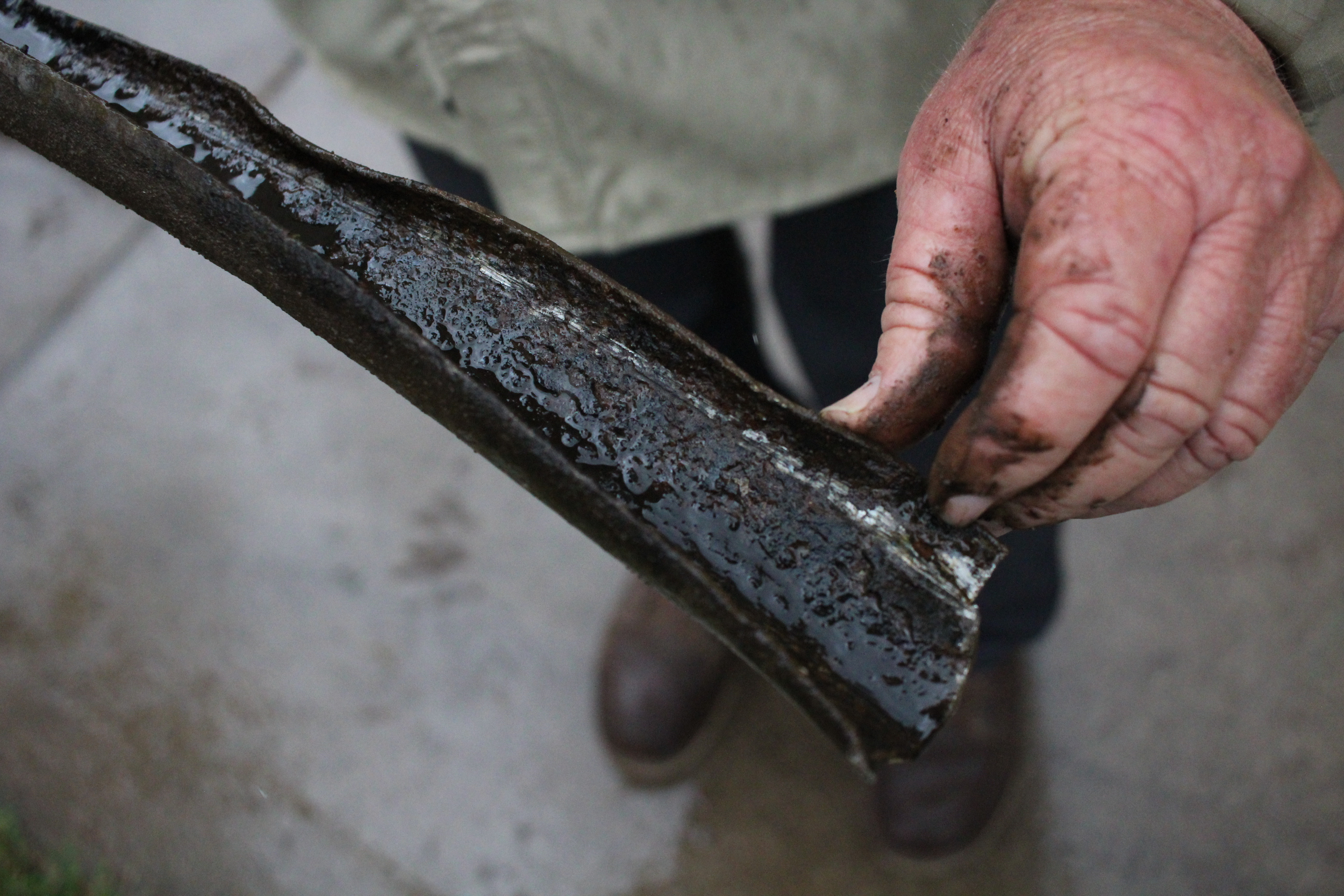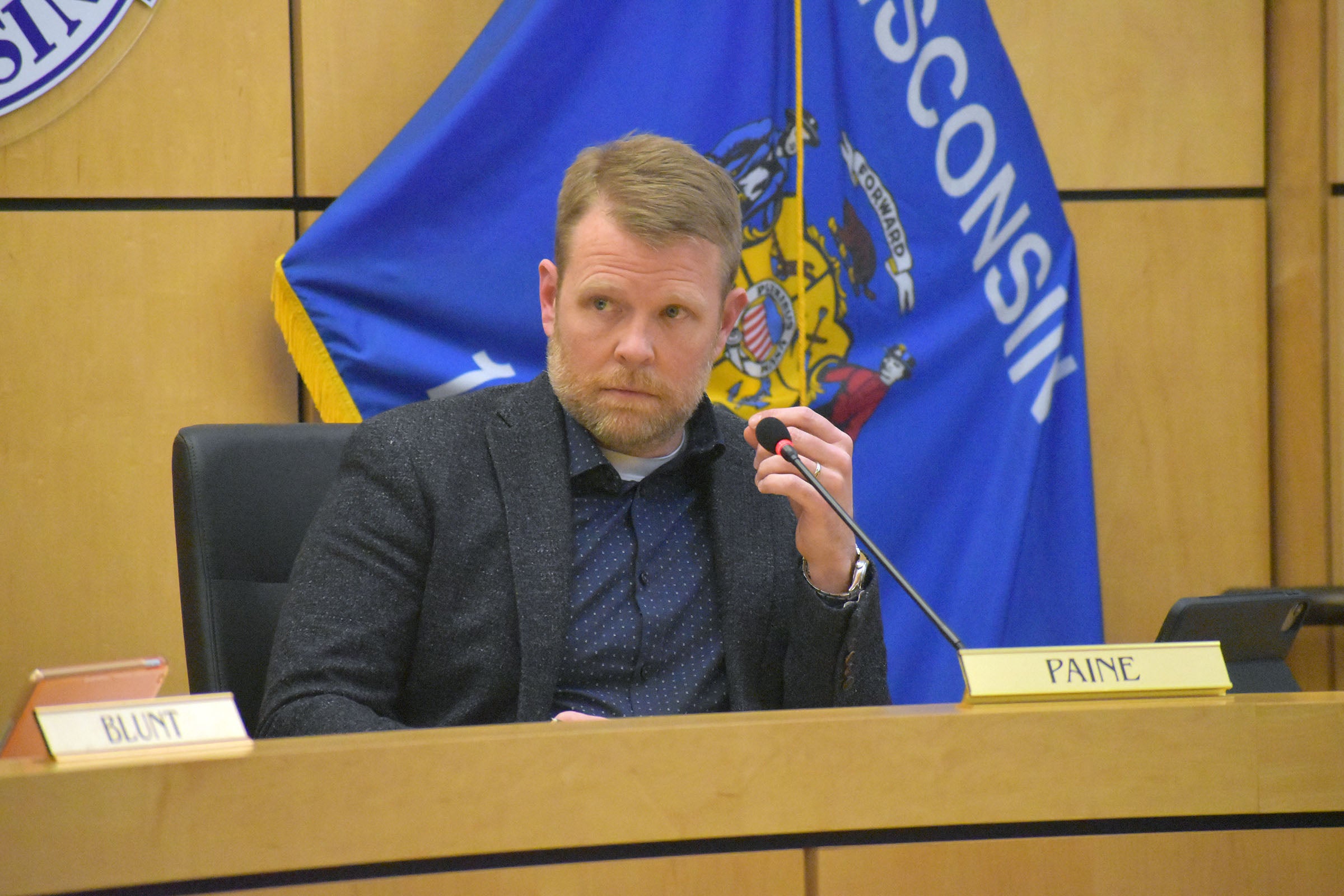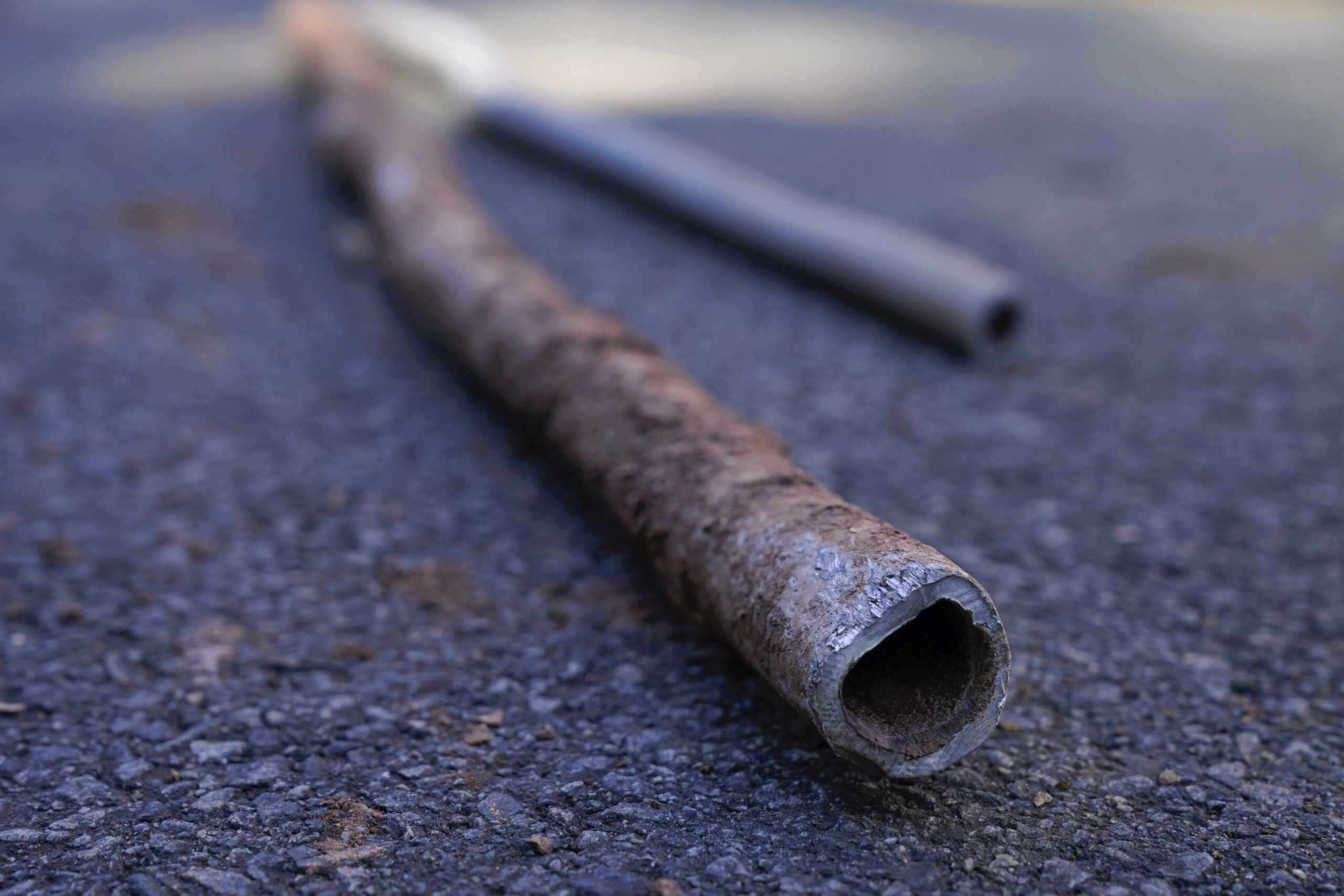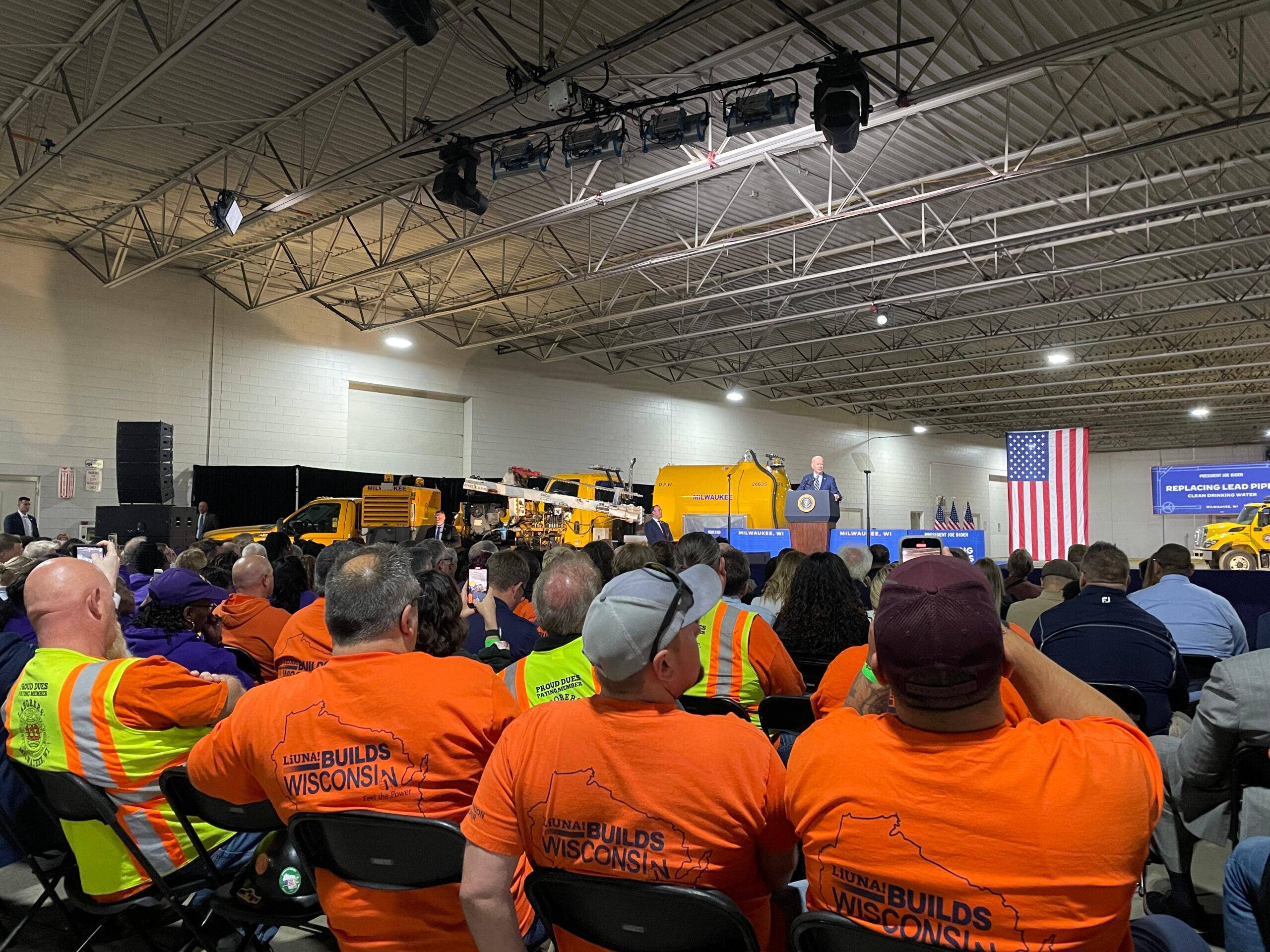President Biden visited Milwaukee on Tuesday to announce a new rule from the Environmental Protection Agency that will require all lead water lines nationwide to be replaced within a decade.
The president said that more than 367,000 lead pipes have been removed nationwide since he took office.
Biden also revealed that the EPA will make an additional $2.6 billion available to fund drinking water upgrades and pipe replacement projects to meet this 10-year deadline. Wisconsin is set to receive nearly $43 million of this additional funding, according to a release from the EPA.
Stay informed on the latest news
Sign up for WPR’s email newsletter.
Milwaukee officials have stated that the city will be able to replace more than 70,000 lead service pipes in compliance with the new EPA rule. But the DNR’s Bureau of Drinking Water and Groundwater Director Steve Elmore told WPR’s “Wisconsin Today” that, while the state is on track to meet this new rule, the federal government’s new funding won’t meet Milwaukee’s needs.
“It will clearly not be enough money,” Elmore said. “Milwaukee will need additional funding, either from the federal government, state government or from local sources to complete this replacement in a 10-year period.”
Elmore said funding often goes to help coordinate how lead pipes are removed.
“Communities need help contracting with the staff that will actually replace the pipes — these aren’t city employees,” Elmore said. “They also need help with outreach and education in the community. There’s a lot of coordination and work with individual homeowners and coordinating with other city departments, like street departments. When you tear up the street to replace a lead service line, there’s a lot to consider.”
Elmore said misconceptions about lead line replacements can pose challenges to getting these aging pipes out of homes and communities.
“There are certain individuals … that aren’t enthusiastic about replacing their lead service line because that may involve disruptions to their landscaping or they may perceive that it will be an inconvenience. Maybe that their water might be off for a while,” Elmore said. “Those are all (misconceptions) the utilities are ready to address and to work with them on that.
Activist says not enough education on dangers of lead in drinking water
Robert Miranda is a co-founder of the Get the Lead Out Coalition, an organization that’s lobbied Milwaukee for years to speed up its removal of lead service lines. He said cities like Milwaukee need to improve public education on the risks of lead in water.
“If the public understood how lead can impact the health of families much better, I think we would see a lot more cooperation in our communities from homeowners to remove these lead service lines,” Miranda said.
Miranda argued that service lines aren’t the only pipes residents need to consider. He said lead plumbing that’s within the house itself can pose health risks and needs to be replaced.
“I think that property owners are lacking the kind of incentives that would move them to do that,” Miranda said. “Tax abatements, some kind of low-interest-rate loan programs. A lot more of this has to be put out there for homeowners to see that there are options for them to engage in removing lead plumbing.”
Ultimately, Miranda said city and community leaders need to invite advocacy organizations to become partners in educating the public and getting the word out on replacing lead lines.
“They are the ones that are in the trenches and who are speaking to families and can come up and support whatever the city is trying to do to resolve this matter,” Miranda said. “They have the information. They have the streets … they talk to families. They need to be at the table.”
Wisconsin Public Radio, © Copyright 2025, Board of Regents of the University of Wisconsin System and Wisconsin Educational Communications Board.




